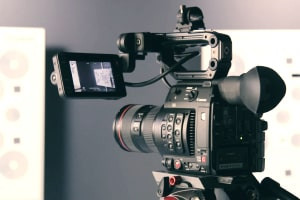Composition in Filmmaking: The Secret to Powerful Shots
 |
| Image by NPTEL via Alison. |
Have you ever watched a movie and wondered why some scenes look so cinematic while others feel flat? The secret often lies in composition – the way filmmakers arrange and capture what’s inside the frame to guide our eyes and emotions.
Here are some of the most common approaches to composition in filmmaking:
Focal Length
The lens you choose doesn’t just decide how “zoomed in” your shot is. It changes the entire mood of the scene. A wide lens shows more of the environment and creates a sense of space, but it can also distort features if used up close. On the other hand, a telephoto lens compresses the background, making characters pop out from their surroundings and giving the scene a more intimate feeling.
Rule of Thirds
This is probably the first composition rule most filmmakers learn. Imagine your screen divided into nine equal parts. Placing your subject along those lines or at the intersections creates balance and immediately makes your shots feel more professional.
Symmetry
Sometimes, filmmakers center everything perfectly in the frame to create harmony, calmness, or even tension. Think about the unique style of Wes Anderson — every frame feels like it could hang in a gallery because of his love for symmetry.
Leading Lines
Have you ever noticed how roads, hallways, or even character gazes can draw your eyes straight to the main subject? That’s the magic of leading lines. They guide the audience’s attention exactly where the filmmaker wants it.
Framing
Using doorways, windows, or even other characters as “frames within the frame” can add depth and focus. It’s a clever way to make your subject stand out while still telling us something about their environment.
Why Composition Matters
Composition isn’t just about making a shot look pretty. It’s about telling a story without words. A centered subject might feel confident and powerful, while one pushed to the corner could seem vulnerable or isolated. Every choice shapes how the audience feels about the scene.
If you’d like to go deeper into concepts like composition, lighting, sound, and color in filmmaking, the Advanced Diploma in Film Studies on Alison is a fantastic free course that explores both the theory and practice of cinema.




0 Comments